Composite Beam Steel Bridges Steel Structure China
Composite Beam Steel Bridges Steel Structure China
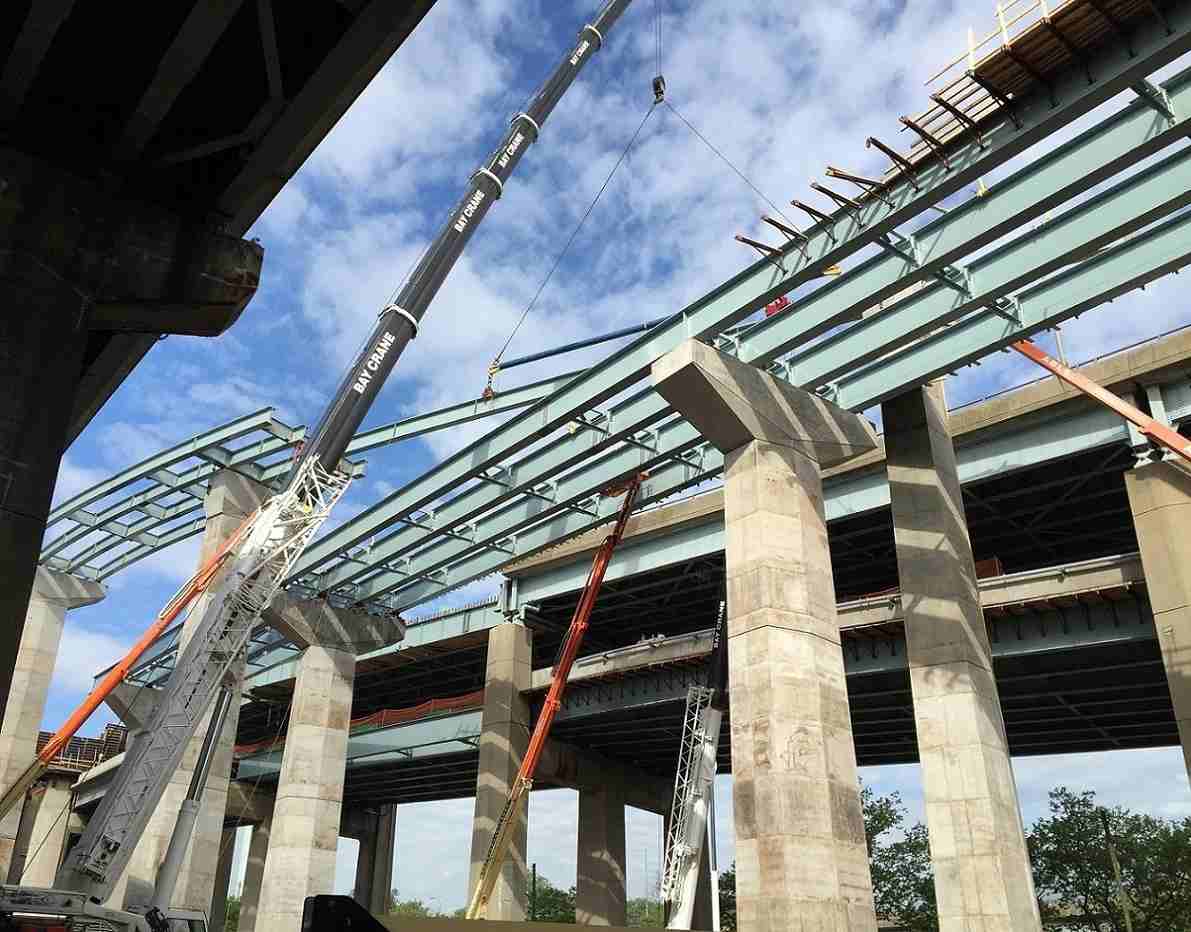
'Composite' means that the steel structure of a bridge is fixed to the concrete structure of the deck so that the steel and concrete act together, so reducing deflections and increasing strength. This is done using 'shear connectors' fixed to the steel beams and then embedded in the concrete. Shear connectors can be welded on, perhaps using a 'stud welder', or better still on export work, by fixing nuts and bolts.
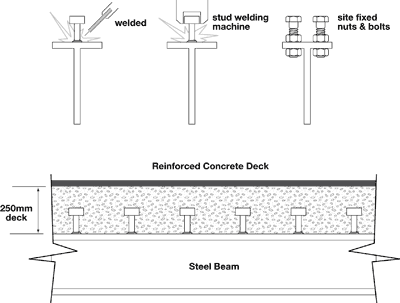
Shear connectors, correctly spaced to resist the loads, make the concrete work 'compositely' with the steel.
Usually the steel carries its own weight and that of the wet concrete. But when the concrete is 'cured' and has acquired its full strength, then all future loads (traffic, surfacing, wind, water, pressure, seismic loads) are shared by the steel/concrete composite.
The concrete is good in compression, while the steel is good in tension and compression. This composite bridge design can be used in the following ways:
1. Simple Beam Bridges - On short spans (8m, 10m, 15m and then more expensively up to 24m), bridges can be made from a number of beams under the roadway straight across the gap. The bridges benefit the most from composite action.
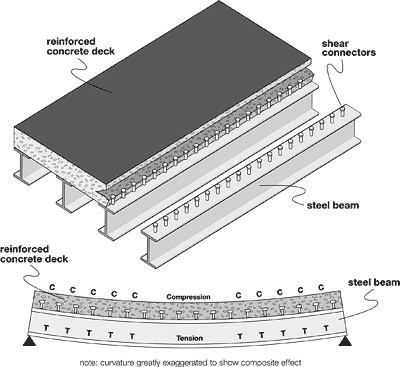
composte layer diagram
Annotation: exaggerated deflected shape showing bending, with concrete carrying some of the compression (C) and steel carrying all the tension (T).
2. Over Truss Bridges - These are similar to simple beam bridges but for longer spans, from say 18m up to approx 100m. The deck is still on top of the steel structure, so goes into compression when deflected.
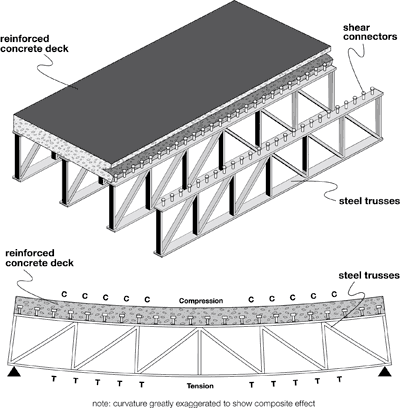
Annotation: As with the simple beam bridges, the concrete can share the compression loads (C) with the steel trusses.
3. Transoms on any type of bridge - Transoms go from side to side across a bridge and carry the deck loads to strong steel frames on either side. This is usually on 'open top' through truss bridges or 'closed-top' through truss bridges.
transoms closed diagram transoms diagram
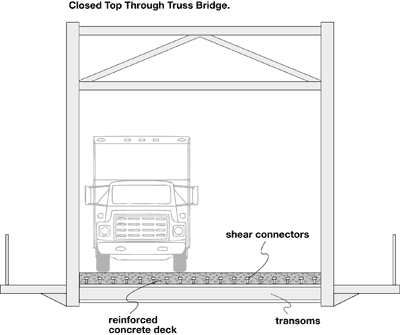
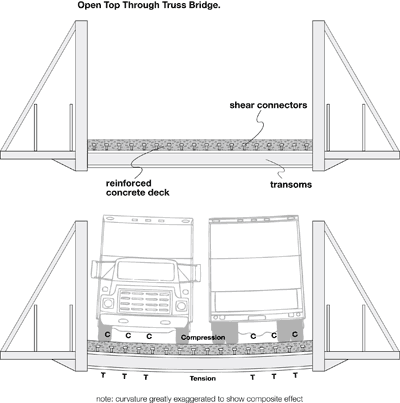
Annotation: Again the transoms bend down under load and the concrete contributes to compression strength.
4. Decking - In a normal steel building the concrete can act together with steel decking, the steel decking taking the place of the regular steel reinforcing bars within the concrete. However in a bridge, the underside of the decking is liable to corrode over time, so is not counted as part of the reinforcement. It is just used as 'lost formwork'.
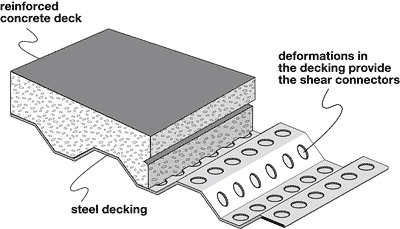
- Pre:None
- Next:Composite Beam Steel Bridges S 2024/4/15
